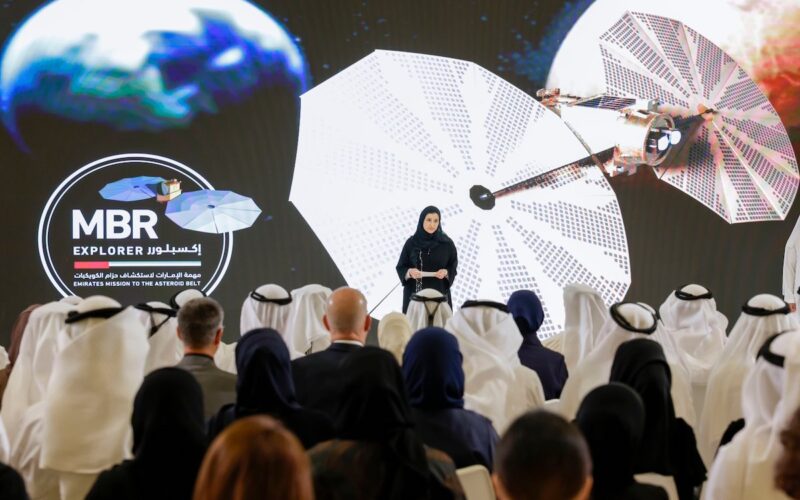The United Arab Emirates Space Agency (UAESA) revealed details on May 29, 2023, of it plans send an autonomous spacecraft to the asteroid belt in 2028, an area of space between Mars and Jupiter which has a dense presence of asteroids.
The 2,300kg unmanned spacecraft used in this mission, dubbed the Emirates mission, will be called “MBR Explorer”, after the initials of Sheikh Mohammed bin Rashid, ruler of Dubai and vice-president of the UAE, who attended the presentation and posted about it on his twitter account.
This mission will study seven different asteroids. It will do so by performing a close flyby of the first six, 10253 Westerwald, 623 Chimaera, 13294 Rockox, 88055, 23871 and 59980, before attempting to land on the seventh, called 269 Justitia.
The latter has been singled out for closer inspection due to its differentiated reddish color, which has led astronomers to suspect it may have come from further afield than other rocks in the asteroid belt, even from outside the solar system.
The UAE space agency has partnered with the University of Colorado Boulder’s Laboratory for Atmospheric and Space Physics (LASP) to build the unmanned spacecraft. The mission will follow in the footsteps of the Hope probe, which the Emirati space agency launched in July 2020 with the purpose of studying Mars.
These missions are not only seen as a way to further scientific research, but also to help pave the way for the development of a new space-related industry both on Earth, where the UAE is investing in the development of its domestic space industry, and in space, with asteroids often touted as a potential future source of valuable minerals.

